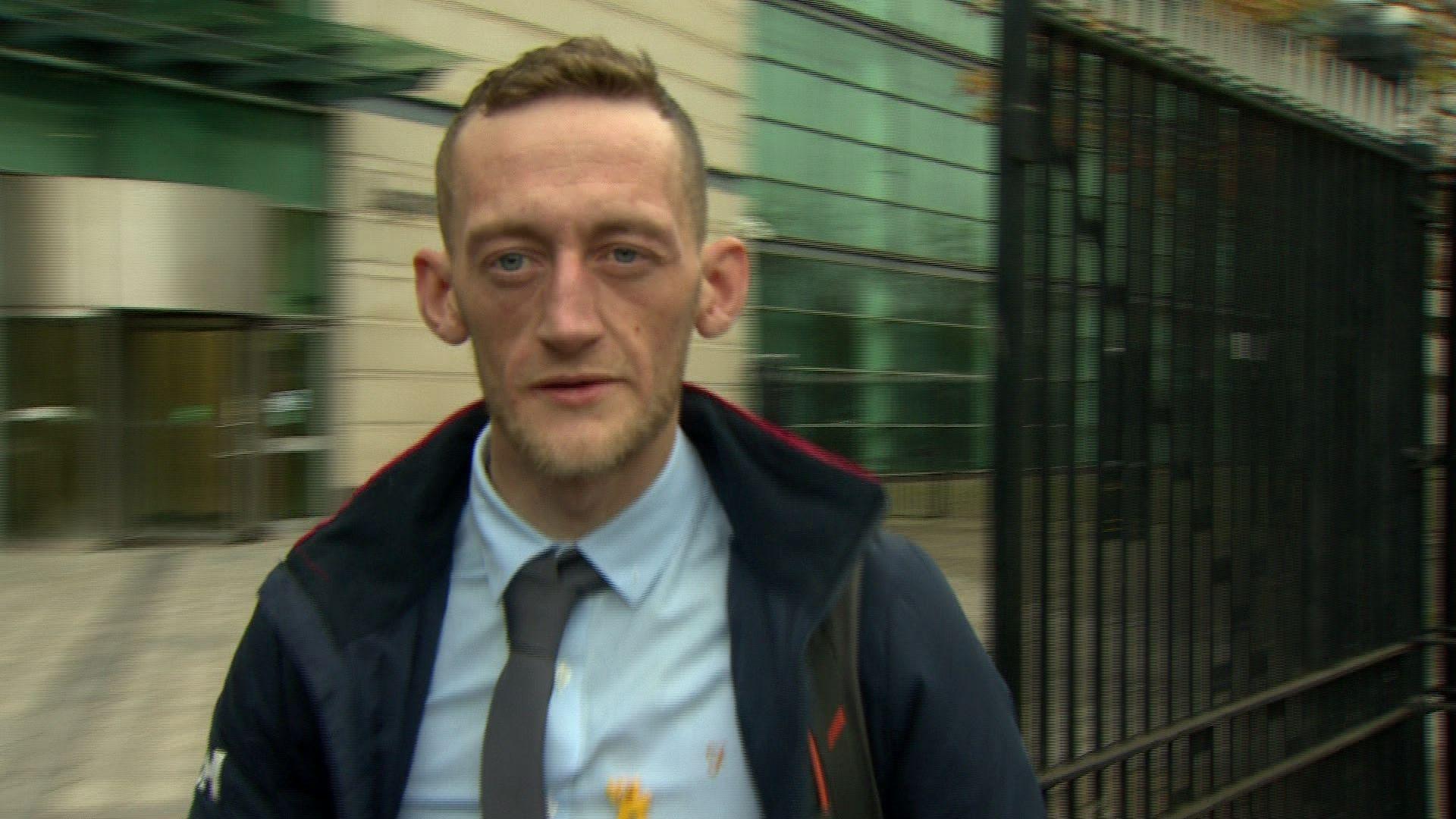Baby's injuries were 'consistent with being shaken'

Craig Rowland previously pleaded guilty to a charge of wilfully neglecting his son
- Published
The trial of a County Armagh man accused of murdering his infant son has heard from a doctor that injuries sustained by the 13-week-old were consistent with being shaken.
Craig Rowland, 29, of Millington Park in Portadown, is charged with the murder and manslaughter of Lewis Oliver Rowland, who died on 20 October 2018, which he denies.
Lewis was admitted to Craigavon Area Hospital with "serious head injuries" in November 2015.
The infant died three years later after complications arising from surgery.
Dr Bill Newman, a consultant paediatric ophthalmologist, gave evidence on retinal haemorrhaging sustained by Lewis.
He told the court that there was bleeding at the back of Lewis' eye, and this was unlikely to have been caused by "direct trauma".
He said with "this type of haemorrhage, it can only be seen by an expert, looking in to the eye with an instrument."
He said Lewis' condition was "consistent with a shaking-type injury".
Dr Newman said: "Short falls are very unlikely to result in retinal hemorrhages."
However, he noted that there have been some exceptional cases.
'The child's mother also pleaded guilty'
He defined a short fall as a baby being held at a normal adult height and confirmed that if a child slips out of an adult's arms, it is very unlikely that would result in the retinal bleeding Lewis had.
He added that "the findings in this case would not correspond with accidental" cause.
He told the court he excluded any other possible cause, including minor impact or injury, normal handling or bouncing of a child, seizures, meningitis or sepsis, immunisations, and birth trauma.
Dr Newman defined shaking in this context as "holding a child in front of you with hands or fingers under the armpits, thumbs on chest."
"Children at this age find it difficult to hold their head," he continued.
He added, if you "move the child backwards and forwards, they can no longer support their head, and their head would move backwards and forwards.
"It would take some force to do that, and it would continue under its own momentum. Something that would be clearly visible to anyone watching that it's clearly inappropriate or dangerous."
'You should never, ever shake a child'
He also pointed to public health advice "that you should never, ever shake a child".
Dr Newman said: "Shaking for a short period of time may be sufficient to create retinal haemorrhages that are seen here. A few seconds."
When questioned by the defence about the amount of force required, Dr Newman said, "the amount of force involved in a shaking-type injury can be difficult to determine."
"Once the threshold for injury has been reached, we don't know that more haemorrhage means more force".
He was asked if the gender of the perpetrator in a shaking incident mattered, and he said it did not.
Dr Newman also confirmed to the court that a layperson wouldn't pick up the fact that Lewis had a retinal haemorrhage, as a person needs expertise and instruments.
But he said that a child with Lewis' injuries "would not be behaving normally from a visual perspective".
"He won't be looking at things in a normal way".
The judge asked Dr Newman if, in Lewis' case, the degree of force was at the greater end of the spectrum, he told the court "yes."
Mr Rowland, who is on bail, has previously pleaded guilty to a charge of wilfully neglecting his son.
The child's mother, Laura Graham, has also pleaded guilty to the same charge.
The trial continues.